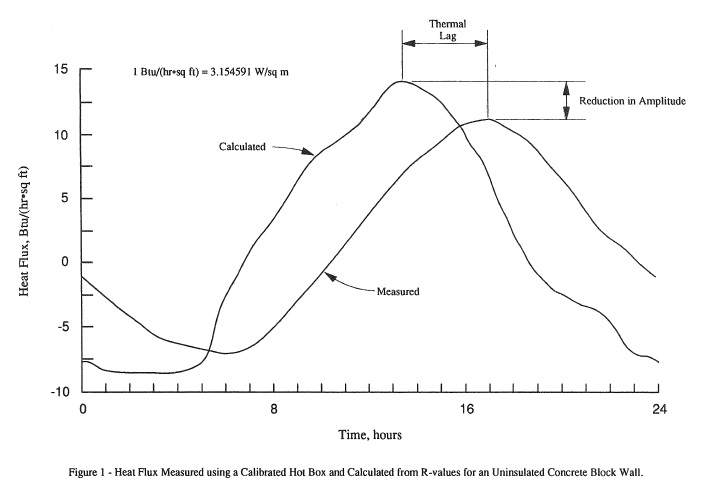J.W. GAJDA AND M.G. VAN GEEM
ABSTRACT
The U.S. energy Policy Act of 1992 mandated that the local energy codes for commercial buildings meet or exceed the requirements of ASHRAE Standard 90.1. This, in effect, made ASHRAE 90.1 requirements the U.S. energy baseline. Canada’s energy code is also influenced by the ASHRAE standard. This Standard specifies requirements for energy conservation and use within commercial buildings, and includes criteria for lighting, H VAC systems, and heat loss through walls.
In the ASHRAE 90.1 standard, credits are given for the thermal mass effects of concrete and masonry walls. The mass effects depend on the climate, wall heat capacity, and insulation position. The thermal mass of the concrete and masonry stores and later releases heat energy which eliminates large temperature swings within the interior of the building. Thermal mass is also effective in commercial buildings because it moderates internal loads generated by occupants, lighting, and equipment.
G-14



